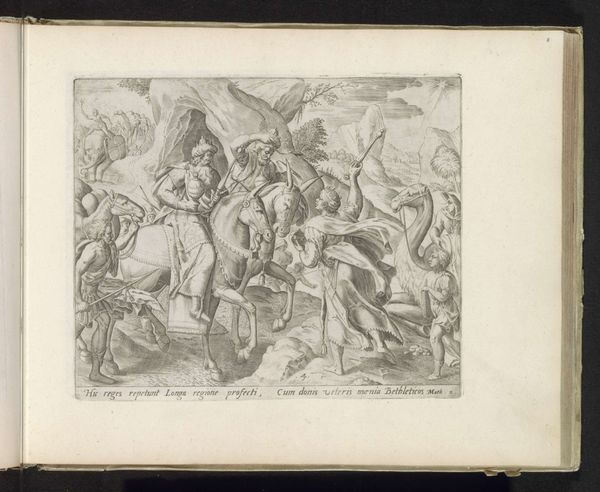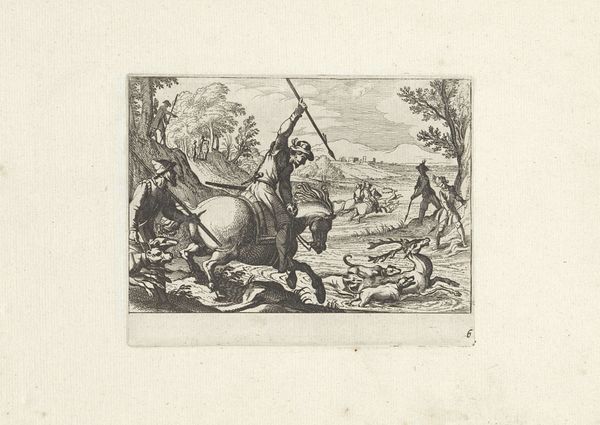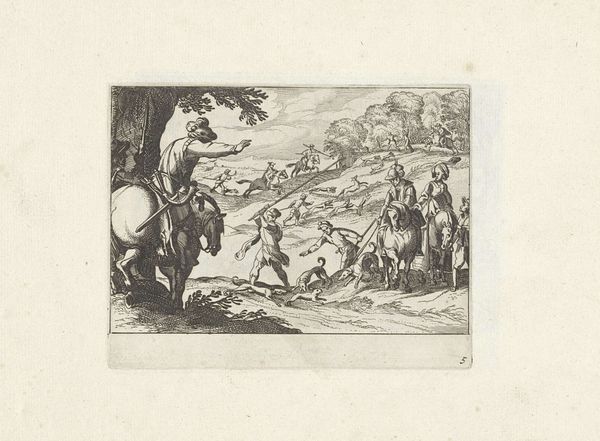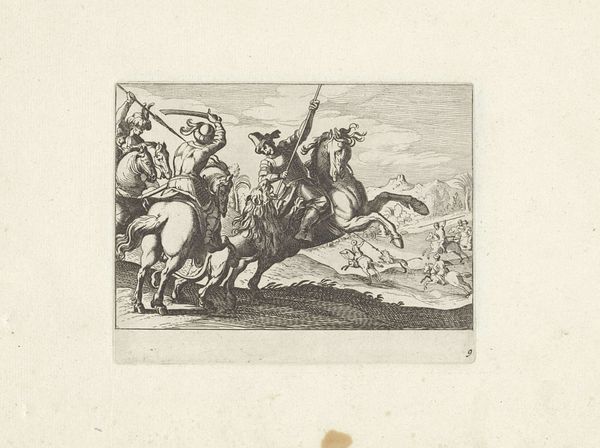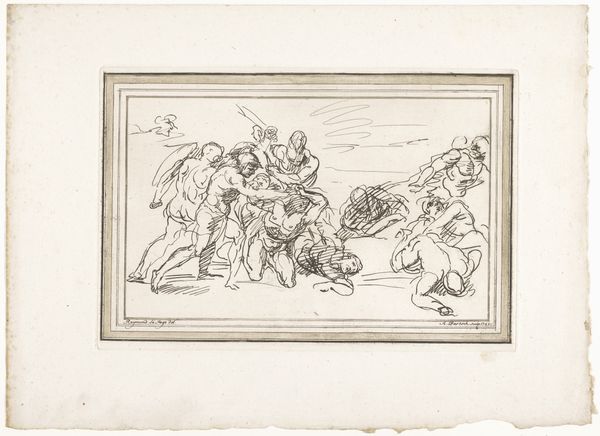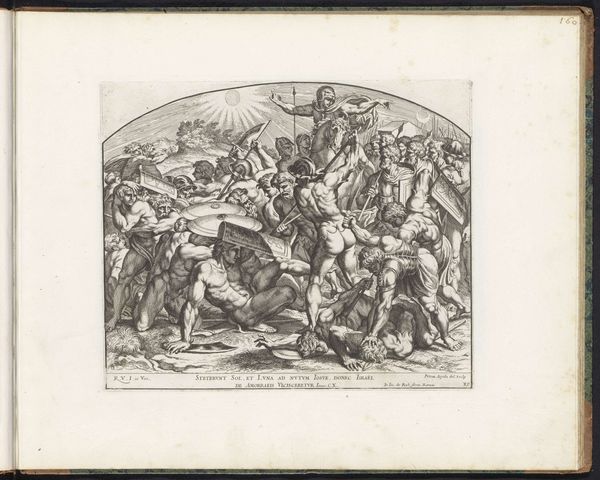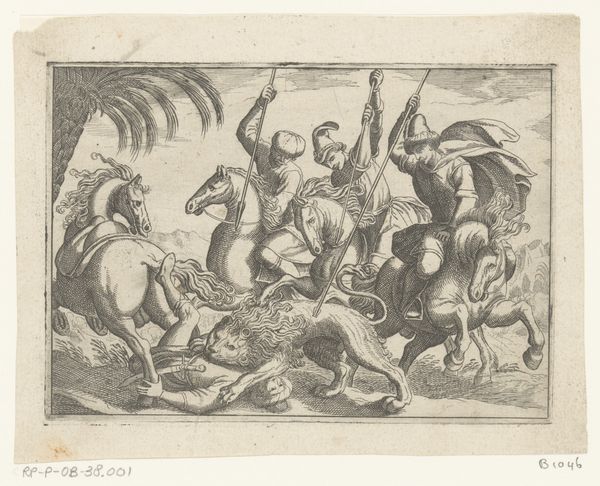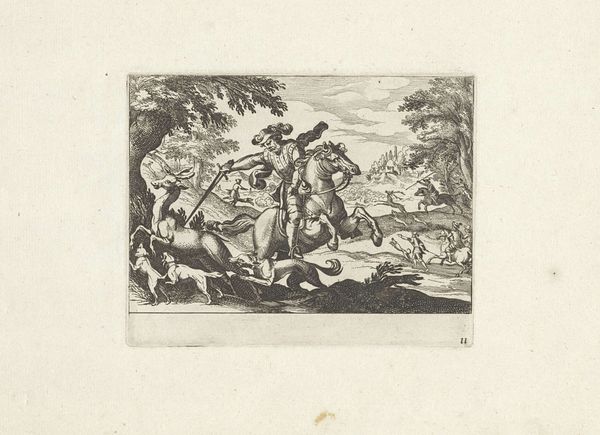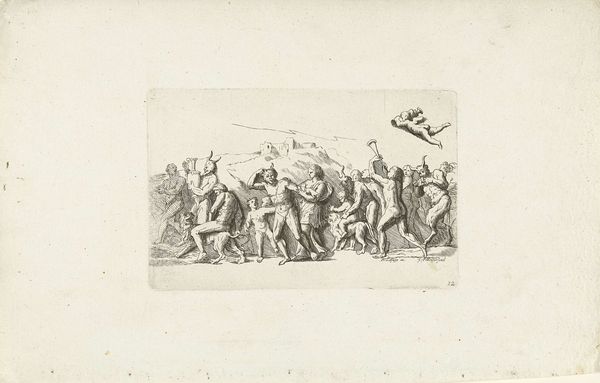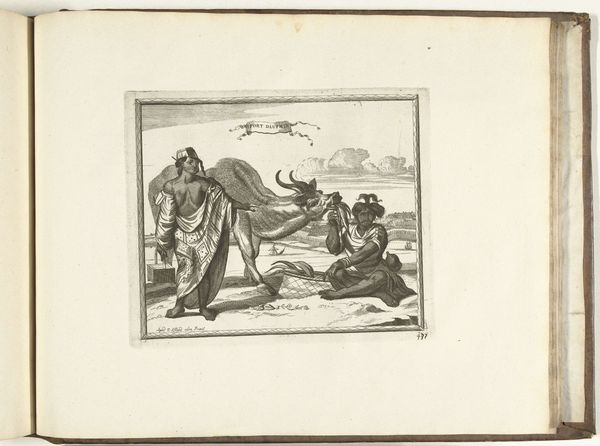
print, engraving
#
narrative-art
#
baroque
# print
#
landscape
#
figuration
#
genre-painting
#
engraving
Dimensions: height 96 mm, width 121 mm
Copyright: Rijks Museum: Open Domain
Curator: Oh, what a delightfully chaotic scene! Editor: Chaotic, yes, but brilliantly so. All the lines and activity lead your eye in and around and all over. So, tell me about what's actually depicted in this frenzy of movement. Curator: We’re looking at an engraving titled "Sruisvogeljacht," which translates to "Ostrich Hunt," made around 1624. It’s currently held in the Rijksmuseum. While the artist is currently listed as anonymous, it's a very compelling depiction of a genre scene rendered in a Baroque style. Editor: Baroque definitely tracks. So much drama! What is immediately striking is the collision of what we think we know about animals-- the ostrich awkwardly trying to flee, the baying hounds pulling it down -- with figures on horseback who seem somewhat aloof to it all, even posed. The contrast between the natural panic and that human intervention creates a weird tension, right? Curator: Precisely. The ostrich in many cultural symbolic contexts would be a metaphor for foolishness, perhaps blindness, the famous hiding-its-head-in-the-sand image, or even greed, as legend said they could digest iron. Consider the cultural symbolism, contrasting animal instinct with what would have been perceived as, I guess, *rational* dominance and a reminder of our relationship to the natural world. What kind of narrative and moral resonances do you imagine contemporary viewers might recognize? Editor: Gosh, rational dominance is putting it lightly when you consider how intensely *active* and frankly cruel the act of hunting is. Seeing the details of the riders, the landscape -- even in a print, there’s a layered effect of the natural world violently, theatrically interrupted. Makes me wonder, were they so accustomed to it they were blind to the madness? Or maybe even celebrating it, for sport and for "morality"? Curator: You've grasped the central question I'd argue: Was it valorizing domination, offering a critique, or simply illustrating the times, trusting its audiences to engage morally? Regardless, It reminds us that symbols, while rooted, evolve. Editor: Evolve, indeed! We’re left, then, to sift through layers of interpretation that only leave me more fascinated with its chaotic wisdom.
Comments
No comments
Be the first to comment and join the conversation on the ultimate creative platform.
